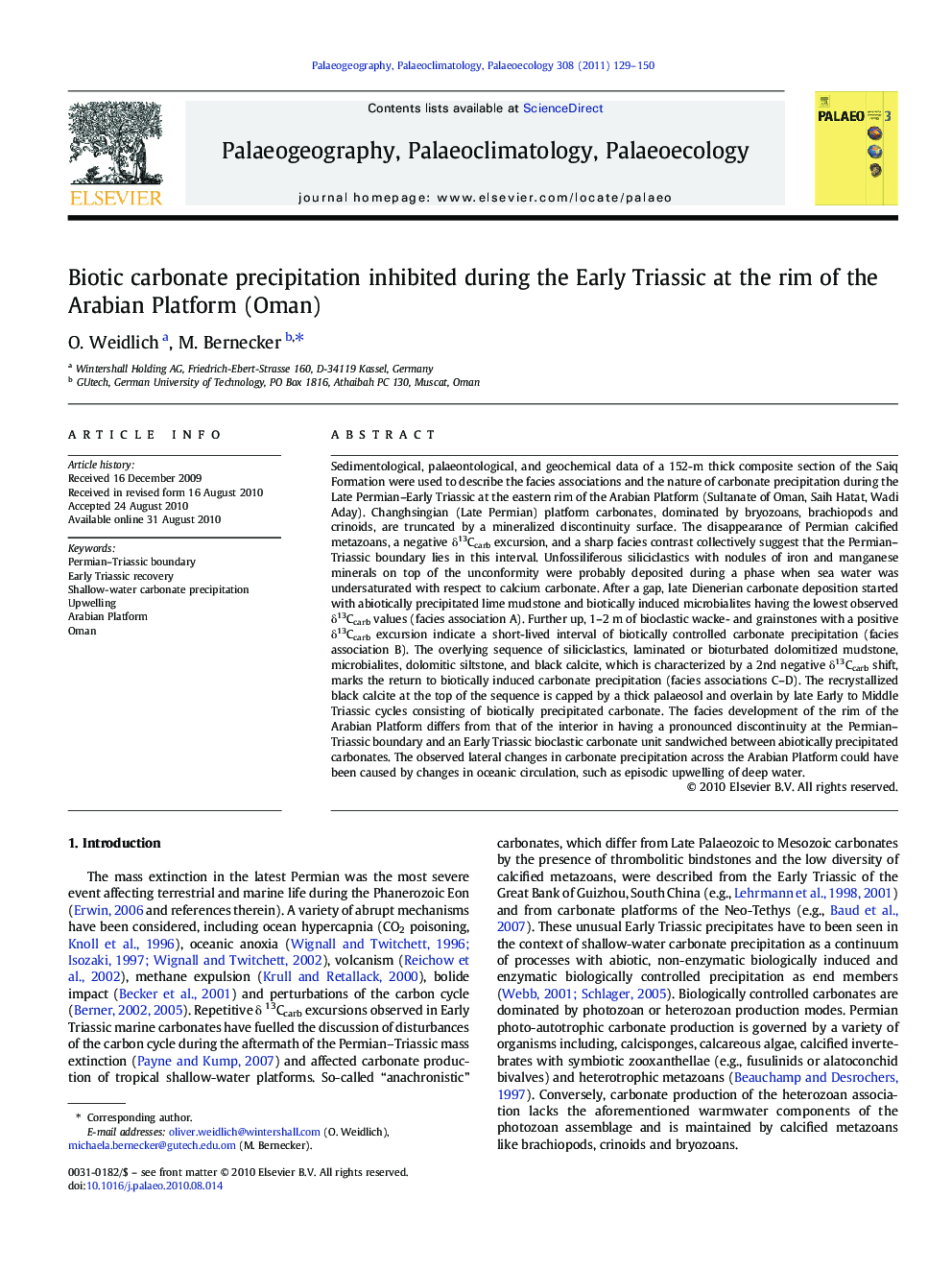| کد مقاله | کد نشریه | سال انتشار | مقاله انگلیسی | نسخه تمام متن |
|---|---|---|---|---|
| 4467223 | 1622252 | 2011 | 22 صفحه PDF | دانلود رایگان |

Sedimentological, palaeontological, and geochemical data of a 152-m thick composite section of the Saiq Formation were used to describe the facies associations and the nature of carbonate precipitation during the Late Permian–Early Triassic at the eastern rim of the Arabian Platform (Sultanate of Oman, Saih Hatat, Wadi Aday). Changhsingian (Late Permian) platform carbonates, dominated by bryozoans, brachiopods and crinoids, are truncated by a mineralized discontinuity surface. The disappearance of Permian calcified metazoans, a negative δ13Ccarb excursion, and a sharp facies contrast collectively suggest that the Permian–Triassic boundary lies in this interval. Unfossiliferous siliciclastics with nodules of iron and manganese minerals on top of the unconformity were probably deposited during a phase when sea water was undersaturated with respect to calcium carbonate. After a gap, late Dienerian carbonate deposition started with abiotically precipitated lime mudstone and biotically induced microbialites having the lowest observed δ13Ccarb values (facies association A). Further up, 1–2 m of bioclastic wacke- and grainstones with a positive δ13Ccarb excursion indicate a short-lived interval of biotically controlled carbonate precipitation (facies association B). The overlying sequence of siliciclastics, laminated or bioturbated dolomitized mudstone, microbialites, dolomitic siltstone, and black calcite, which is characterized by a 2nd negative δ13Ccarb shift, marks the return to biotically induced carbonate precipitation (facies associations C–D). The recrystallized black calcite at the top of the sequence is capped by a thick palaeosol and overlain by late Early to Middle Triassic cycles consisting of biotically precipitated carbonate. The facies development of the rim of the Arabian Platform differs from that of the interior in having a pronounced discontinuity at the Permian–Triassic boundary and an Early Triassic bioclastic carbonate unit sandwiched between abiotically precipitated carbonates. The observed lateral changes in carbonate precipitation across the Arabian Platform could have been caused by changes in oceanic circulation, such as episodic upwelling of deep water.
Journal: Palaeogeography, Palaeoclimatology, Palaeoecology - Volume 308, Issues 1–2, 15 July 2011, Pages 129–150